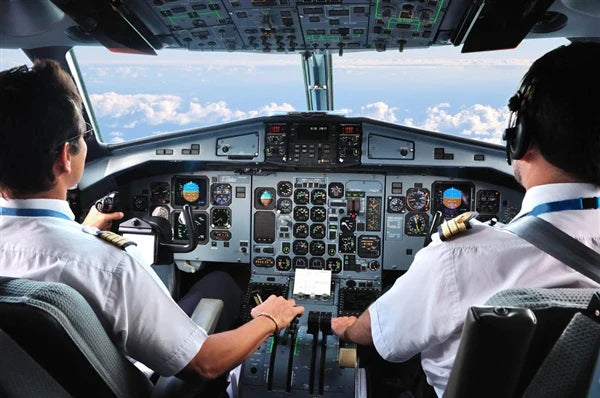
Understanding Aviation Headsets and Their Specialized Role
Share
Embarking on the fascinating journey of aviation communication brings us to the indispensable world of aviation headsets. Designed with precision and innovation, these specialized devices serve as the linchpin for clear and efficient communication within the cockpit. In this exploration. we delve into the distinctive features and functionalities that make aviation headsets a cornerstone of pilot equipment. From their role in noise reduction to the intricacies of active noise-canceling technology, this journey unravels the vital components that contribute to seamless communication and enhanced safety in the skies. Join us as we navigate the unique landscape where technology meets the demands of aviation, highlighting the pivotal role of these headsets in the realm of flight operations.
What Headphones Do Pilots Use
Pilots predominantly use aviation headsets rather than conventional headphones. These specialized headsets are designed to meet the unique requirements of cockpit environments, featuring features such as noise reduction, a noise-canceling microphone, and durability. Aviation headsets prioritize clear communication and minimize ambient noise for optimal safety and operational efficiency.
How Do Aviation Headsets Work
Aviation Headphones excel in cockpit communication by employing noise reduction technology and specialized design. Engineered for durability, they feature noise-canceling microphones that filter ambient sounds, ensuring clear communication between pilots and air traffic control. Comfort is prioritized through padded ear cups, and connectors interface with aircraft system. These headsets, tailored for aviation environments, enhance communication clarity and minimize distractions during flight operations. Especially, the most prominent type of aviation headset is the ANR aviation headset. Active Noise Reduction (ANR) headsets incorporate a dedicated external microphone positioned on the ear cups. These microphone actively monitor and analyze ambient noise within the aircraft. Through sophisticated digital processing, the headsets generate opposing sound waves, effectively cancelling out undesirable background noise and creating an environment conducive to clear communication and reduced auditory distractions for the user.
Aviation Headset Vs Normal Headset
Aviation headsets and normal headsets serve different purposes and are designed with specific features to meet the unique requirements of their respective users. Let's compare the two types of headset:
Versatility: The aviation plane headset excels in it specialized role within the cockpit, offering unparalleled noise reduction, clear communication. and durability. However, their design is tailored exclusively for aviation, lacking the versatility of normal headsets. They prioritize optimal performance in the unique and demanding environment of an aircraft, ensuring pilot safety and communication efficiency. Normal headsets are designed for general-purpose use, such as listening to music, making phone calls, or playing video games. They are not optimized for the specific demands of aviation environments.
Noise Reduction: Aviation headsets are specifically designed to reduce cockpit noise, which can be quite loud due to the aircraft engines and other ambient sounds. They often feature active noise-canceling technology to minimize background noise, allowing clear communication between pilots and air traffic control. While some normal headsets offer passive noise isolation, they may not provide the same level of noise reduction as aviation headsets. Active noise-canceling features are less common in regular headsets.
Microphone: Aviation headsets typically have a noise-canceling microphone to filter out ambient noise, ensuring that the pilot's voice is transmitted clearly. While some normal headsets offer passive noise isolation, they may not provide the same level of noise reduction as aviation headsets. Active noise-canceling features are less common in regular headsets.
Durability: Aviation headsets are built to withstand the rigors of regular use in the cockpit. They are often more robust and durable than regular headsets. Regular headsets may not be as robust as aviation headsets since they are not subjected to the same environmental conditions and usage scenarios.
Comfort: Pilots often wear aviation headsets for extended periods, so comfort is a crucial factor. Aviation headsets are designed with comfortable ear cups and headbands to reduce fatigue during long flight. Comfort features vary among normal headsets, but they may not be designed for the same level of comfort during prolonged use as aviation headsets.
Conclusion
In conclusion, aviation headsets play a vital role in ensuring effective communication and safety within the cockpit. Engineered with specialized features like noise reduction technology, durable construction, and noise-canceling microphone, they address the unique challenges of aviation environments. While excelling in their designated role, aviation headsets lack the versatility of normal headsets designed for everyday use. The distinction lies in their focus on optimizing performance in the specific demands of aircraft settings. Whether prioritizing noise reduction, microphone clarity, durability, or comfort, the choice between aviation and normal headsets ultimately depends on the user's specific needs and the intended usage environment.